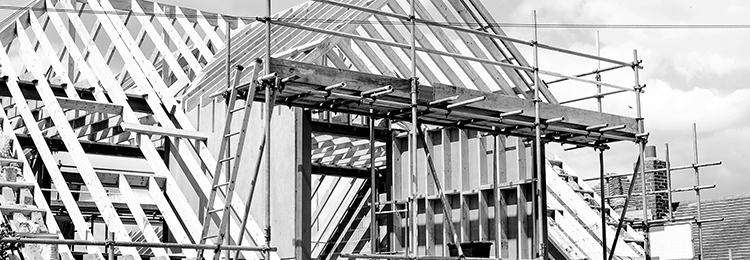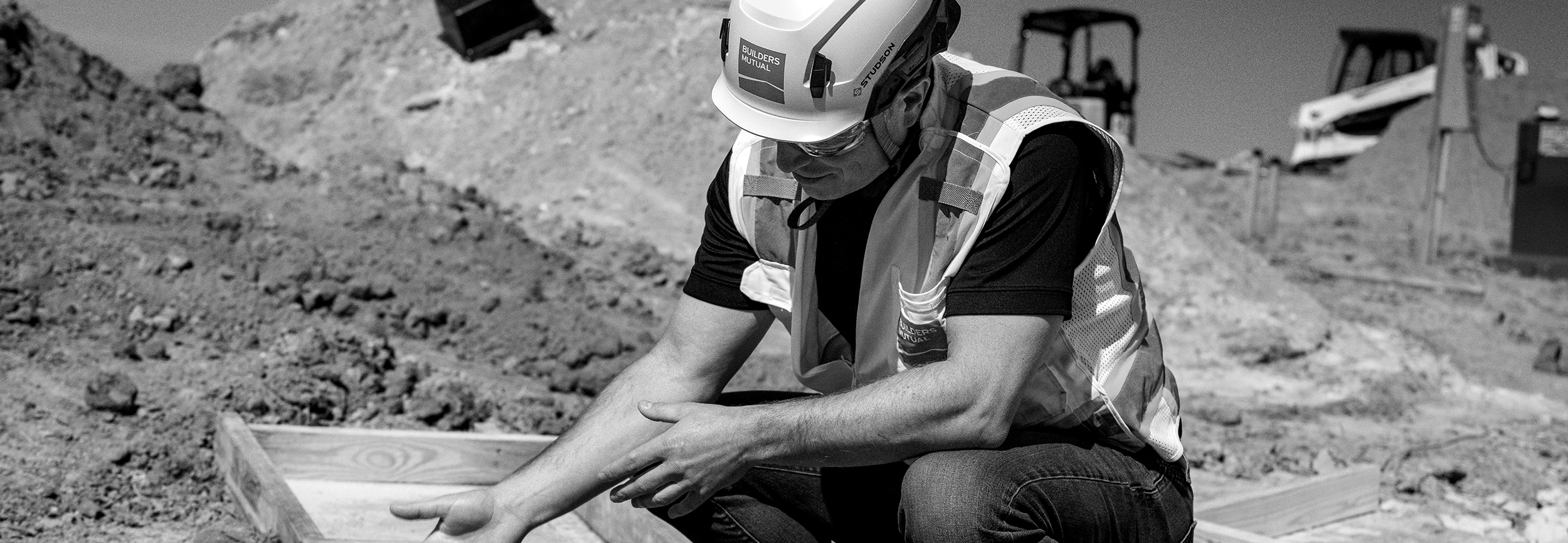Ever wonder how many safety checks are just right? Too few safety checks and you’re putting contractors at risk. And yet, too many can mean you’re impeding productivity.
There’s no doubt that safety checks are a critical part of ensuring worker wellbeing. From assessing general compliance and identifying hazards to enforcing PPE use and keeping emergency procedures in place, they’re the baseline––and driving force––behind upholding safety standards.
With the right safety check protocol in place, your crew can work confidently and productively, while minimizing unnecessary risks. So, how many should you do? There’s no one-size-fits-all solution. It’s dependent on a variety of factors that differ from job to job. Paxtyn Wright, Risk Management Consultant at Builders Mutual, advises how to assess your safety check protocol to make sure you’re doing enough:
1. Start with at least two
High-risk environments, such as construction or manufacturing, require a minimum of at least two safety checks per day––one before and after lunch hour.
Starting each day with a safety check helps identify potential hazards before they lead to accidents or injuries. Setting the precedent first thing reminds workers that you’re evaluating their practices, watching PPE standards, and double checking equipment usage.
After lunch, it’s common for crews to get more complacent about safety protocols as they focus on finishing their to-do list. An afternoon safety check serves as an important reminder to not let safety slack in the name of productivity. During any post-lunch walkthrough, pay extra attention to ensure that no safety measures are out of place from the morning shift.
Upholding high standards throughout the day demonstrates a continuous commitment to safety, which boosts morale, fosters trust, and ultimately creates a working environment where contractors feel secure and supported.
2. Note extra risks
At many job-sites, two daily safety checks might not be enough. Some factors that might indicate you need extra safety measures in place include:
- Shift changes: The more shift changes take place on site, the more room there is for error. Adding additional checks per shift change can help rotating crews maintain important safety measures from first shift to last.
- Extra job/equipment risks: Some jobs are more prone to accidents, such as roofing. Since safety protocols are site-specific, supervisors should consider the equipment and job complexities to determine if a site needs to take extra precautions with more check-ins.
- Recent incidents or near-misses: If a site has a recurring incident, or a number of near-misses, it’s in the crew’s best interest to reconsider how safety is being approached. Additional safety checks are a proactive way to reinforce necessary measures and prevent future accidents.
3. Engage your workers
When it comes to the ins, outs, and risks of your job-site, your workers often know best. Having an open, ongoing conversation with crews about their experiences and safety concerns can help you understand if the safety checks you have in place are doing their job, or if more might be necessary.
By making safety collaborative, you also help crews understand that having strict protocols doesn’t just promote their wellbeing––it boosts job outcomes, too. Regular inspections enable workers to identify areas for improvement, prevent costly disruptions, and improve overall operational efficiency.
4. Strive for quality over quantity
Being rigorous about standards and holding thorough walk-throughs is one of the most effective ways to maximize the impact of each safety check. To improve safety check quality, you can:
- Check safety around the clock: When crews know to expect a safety check at the same time every day, it can provide an inaccurate read of the situation. Altering your timing slightly here and there will ensure you’re getting a real representation of safety.
- Vary your approach: Similar to switching up your timing, consider diversifying your approach, too. If you always walk the site clockwise, occasionally do a counterclockwise check for good measure.
- Take your time: Safety can’t be rushed. As you walk through, take your time to pause and do a 360° look around. Slowing down can help you notice previously overlooked hazards.
5. Don’t forget the follow-up
Your safety checks are only as good as your follow-through. After each safety check, do your due diligence to resolve any risks. Resolve larger, more severe hazards first. As you make corrections, it’s critical to keep your records up to date too. Having a paper trail will help you have a point of reference as incidents come up so you can adjust procedures and tailor training accordingly.
At the end of the day, Wright states, “safety should be a part of your company culture, and leading by example is important. This is a partnership and we care about every policyholder and outcome. Reducing the chance for injury benefits everyone.”
If you’re not sure how many daily safety checks are enough, Builders Mutual is here to help with free job-site visits and assessments.
Contact your Builders Mutual Risk Management Consultant today and set up a free consultation to keep maximizing site safety, one check at a time.




 Find an
Find an